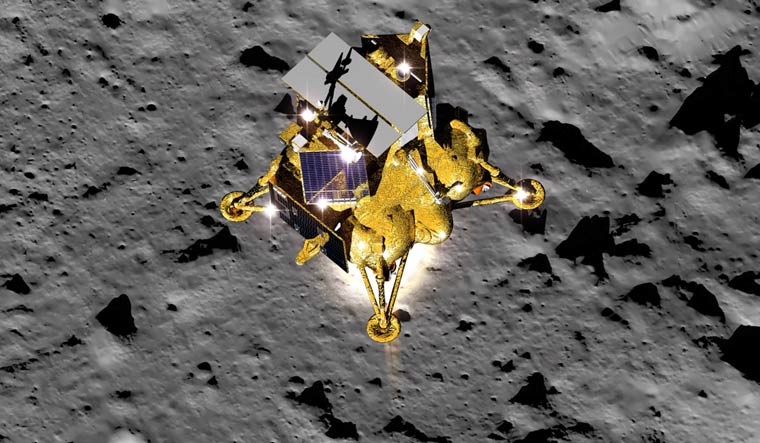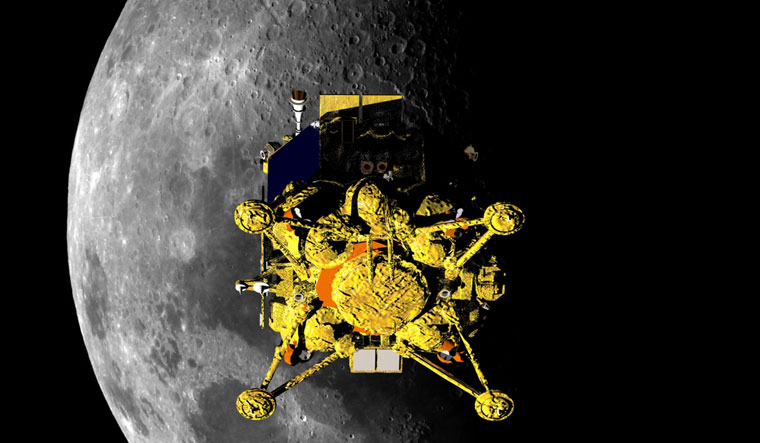In a recent setback for Russia's ambitious lunar exploration program, the Luna-25 spacecraft crashed into the lunar surface during its preparations for a soft landing at the Moon's south pole. This mission, which aimed to mark Russia's return to lunar exploration after a nearly 50-year hiatus, encountered difficulties shortly after liftoff from the Vostochny Cosmodrome on August 11, 2023. The Russian space agency Roscosmos announced that communication with Luna-25 was interrupted when an impulse command was sent to lower its lunar orbit, leading to the unfortunate conclusion that the spacecraft had "ceased to exist as a result of a collision with the lunar surface." This failure is a significant blow to Russia's space ambitions and underscores the challenges of lunar exploration.
Yuri Borisov, the Head of Roscosmos, expressed determination to continue their lunar program despite this setback. He highlighted the importance of not interrupting the lunar program, citing the decades-long pause in lunar exploration as a contributing factor to Luna-25's failure. Borisov emphasised the need to learn from past experiences and improve their efforts. A special commission has been established to investigate the precise causes of the incident.
In the face of the Luna-25 setback, Roscosmos remains resolute in its commitment to lunar exploration, with Luna-26, Luna-27, and Luna-28 missions serving as the next steps in their ambitious lunar program. These missions aim to not only build upon the scientific knowledge gained from past lunar endeavors but also demonstrate Russia's dedication to advancing space exploration on our celestial neighbor.
Luna-26 mission
Following the Luna-25 failure, Roscosmos remains committed to lunar exploration and has outlined plans for future missions. The Luna-26 mission, also known as Luna-Resurs-Orbiter, is scheduled for a 2027 launch. This lunar polar orbiter will play a crucial role in locating and quantifying natural lunar resources, with a focus on studying the lunar surface and its environment, including cosmic rays and solar wind. Luna-26 is expected to carry a suite of scientific instruments, some of which may be contributed by NASA or private US companies. Furthermore, it will serve as a telecommunication relay between Earth and Russian landed assets.
 Luna-25 lander | Shutterstock
Luna-25 lander | Shutterstock
Luna-27 mission
Luna 27, following Luna-26 by approximately one year, is an ambitious lunar lander mission set to launch in 2028. This mission is a collaboration between Roscosmos and the European Space Agency (ESA). Luna-27 aims to study the composition of the lunar soil near the south pole and detect lunar polar volatiles, with a special focus on water. It will employ a European navigation system called "Pilot" for precise landing at a challenging lunar south pole site. Luna-27's findings could provide valuable insights into the Moon's resources and potential for future missions.
Luna-28 mission
Luna-28, part of Roscosmos's lunar exploration plan, consists of a stationary lunar lander and a lunar rover. This mission is designed to collect soil samples from the Moon's surface and return them to Earth. After successfully acquiring these samples, the return vehicle will separate from the orbiter and begin its journey back to Earth. While the lunar orbiter continues its mission in lunar orbit, the samples will be analyzed on Earth, potentially revealing critical information about the Moon's composition and resources. While initially scheduled for 2027, delays in the Luna-Glob program have pushed the expected launch date to no earlier than 2030 as of August 2023.


